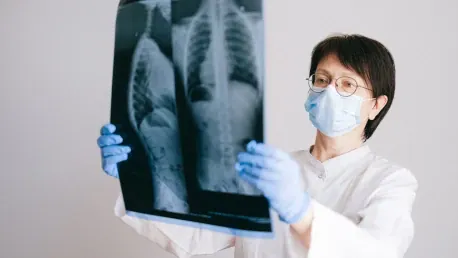Lung cancer remains a formidable foe in the realm of oncology, claiming more lives than any other cancer worldwide due to its high rate of metastasis. One of the critical factors contributing to lung cancer’s aggressiveness is the Warburg effect, where cancer cells favor aerobic glycolysis over oxidative phosphorylation to sustain their proliferation and survival. Recent research has shifted focus towards understanding the molecular mechanisms driving this metabolic shift, with ING5 emerging as a key player in the metabolic reprogramming of lung cancer cells.
ING5’s Influence on Metabolic Shifts
Warburg Effect and Metabolic Reprogramming
The Warburg effect describes how cancer cells predominantly use aerobic glycolysis to generate energy, a less efficient pathway compared to oxidative phosphorylation. This metabolic reprogramming fuels rapid cell division and growth. ING5, a member of the inhibitor of growth (ING) tumor suppressor family, has been identified as a significant regulator in this process. Research has pinpointed ING5’s role in regulating the phosphorylation events that dictate the metabolic pathways chosen by cancer cells.
Specifically, ING5 enhances the phosphorylation of pyruvate dehydrogenase kinase 1 (PDK1) at tyrosine 163 (Y163). This particular phosphorylation event hampers PDK1’s kinase activity towards the pyruvate dehydrogenase E1 subunit alpha 1 (PDHA1). The downstream effect is a reduction in PDHA1 phosphorylation at serine 293, leading to increased activity of the pyruvate dehydrogenase (PDH) enzyme. Heightened PDH activity shifts the cell’s energy production from glycolysis to oxidative phosphorylation, thus reducing glycolysis.
Research Methodologies and Key Findings
To uncover the exact influence of ING5 on lung cancer metabolism, a variety of experimental approaches were utilized. Phospho-proteomics, Western blotting, and cellular assays were employed to investigate the protein interactions and phosphorylation dynamics. Notably, overexpression of ING5 was found to result in elevated levels of PDK1 Y163 phosphorylation. Subsequent immunohistochemical staining of tumor tissue microarrays revealed that high levels of PDK1 Y163 phosphorylation correlated with better prognoses in lung cancer patients, suggesting potential clinical relevance.
The research further explored the impact of PDK1 Y163 phosphorylation on various lung cancer cell behaviors, including proliferation, invasion, and metabolic activity. Mutation experiments, where tyrosine 163 was changed to a non-phosphorylatable form (Y163F), demonstrated that the suppressive effects of ING5 on these behaviors were negated. In vivo studies using mouse xenograft models corroborated these findings; ING5 overexpression led to reduced tumor growth and metastasis. However, these effects were reversed when the Y163F mutation was introduced, highlighting the critical nature of this phosphorylation event.
TIE1 and Its Connection to ING5
Identification of TIE1 as the Phosphorylating Kinase
Another intriguing aspect of the study was the identification of TIE1, a receptor tyrosine kinase, as the kinase responsible for phosphorylating PDK1 at Y163. TIE1, upregulated by ING5, was shown to localize to the mitochondria where it directly phosphorylates PDK1. This discovery links TIE1 to ING5-mediated metabolic reprogramming in lung cancer cells. Notably, knockdown experiments targeting TIE1 resulted in reduced PDK1 Y163 phosphorylation levels, further affirming TIE1’s role in this novel signaling pathway.
The presence and activity of TIE1 within the mitochondria highlight a previously unappreciated aspect of ING5’s regulatory mechanisms. By directly phosphorylating PDK1 at Y163, TIE1 influences the metabolic fate of lung cancer cells. The identification of TIE1 not only provides insight into the intricacies of cellular metabolism but also offers a potential therapeutic target. The modulation of TIE1 activity, in conjunction with ING5 upregulation, could present a novel approach to altering the metabolic landscape of lung cancer cells, steering them away from glycolysis and towards oxidative phosphorylation.
Potential Therapeutic Implications
Understanding ING5’s role could pave the way for innovative therapeutic strategies, offering hope in the fight against lung cancer. Researchers are now exploring how ING5 influences this process and how targeting such mechanisms could lead to more effective treatments. This metabolic shift supports their rapid proliferation and survival. Recent studies have focused on unraveling the molecular mechanisms behind this shift, with particular attention on ING5, a critical factor in the metabolic reprogramming of lung cancer cells.









